The Big Adulthood Blind Spot
The Big Idea: For years, we’ve ignored what adulthood is and how it happens.
If you gathered a random sampling of Americans and asked them what it takes for someone to become an adult, you’d get about as many answers as answerers.¹
Our society broadly shares expectations and patterns of behavior around birthdays, around grief, around weddings, and most other major social transitions, but when it comes to the transition from childhood into adulthood, we lack them. Without shared expectations and patterns, it’s everyone for her- or himself.
This should surprise us. It isn’t like becoming an adult is rare or unimportant. It is an all-but universal experience with broad implications for every member of the communities in which it happens. And furthermore, it isn’t like our society is in the majority with its confusion. It’s much more normal for societies to have shared customs, rituals, and assumptions around the transition into adulthood than not. Yet here we are, without them to any significant degree.
How did we become so blind to adulthood?
Traditional markers of adulthood are less common or valued less.
Much of this has happened as a result of gradual culture change. In the past few decades, both marriage and childbirth have become less common. When they do happen, they tend to occur later in life. The economics of home purchasing has become less straightforward. High school diplomas have become less socially and economically valuable. And corporate-style careers with a clear “ladder” to climb and a net of benefits to support a lifetime of loyal employment are more rarely available or chosen.
These traditional markers of adulthood were not ideal. They excluded a large number of people in many different ways. Functionally, they assumed static social roles based on gender, race, class, age and other demographic differences to which most people would hardly want to return. But what they provided that we now lack is a set of markers that unambiguously signaled adulthood to our society at large. As they changed, those markers were not clearly replaced.
Childhood communities have less involvement in the adulthood transition.
What’s more, as high school diplomas lost their economic value to increasingly-accessible college degrees, people began to act as if the socially acceptable transition into adulthood had to happen on a college campus or somewhere similar, somewhere elsewhere. Childhood communities, which before had carried a lot of the burden of integrating high school graduates and other new adults into the local workforce and into adult social life, became less and less accustomed to playing that role. And youth came to expect that adulthood was characterized by a hard break with their pasts.
This meant that youth were left to figure out a path into adulthood in the midst of communities of which they had never before been a part. Those who stayed in their childhood communities often found their adulthood questioned or under-supported. And, functionally, individuals became the agents of declaring their own adulthood, assuming that they could persuade themselves of it in the contexts of new communities.
People think of themselves as adults at later ages.
But it turns out that persuading yourself that you are an adult is a lot harder than it may initially seem. If we don’t “feel” grown up, whatever that means (and there are few clear, shared external markers to help us with this), how can we “be” grown up? As a result, self-reported adolescence has pushed farther back in age, often well into one’s 20s or 30s, long after legal adulthood.
Rather than receiving their adult status from their home societies, individuals are asked to assert it for themselves. Some wait passively for adulthood to magically happen to them. Others experience an extended, depressing time of fluctuating, unstable identity. Others chase the feeling of adulthood blindly, accruing things and experiences in an effort to persuade themselves of their adulthood. Many begin already nurturing a historically strange nostalgia, and an idolization of their own youth.
Our culture’s products and stories overwhelmingly idolize youth.
And that nostalgia and idolization gets supported by a superabundance of cultural influences, which prize young beauty and passionate sexual potency above wisdom and maturity. This matrix of narratives and images and influences, fueled by powerful markets, is so powerful and so ingrained that American high schoolers will regularly hear older adults advise them to have fun because, “These are the best years of your life!” But if older adults envy their position in society, why should youth desire adulthood at all?
No wonder so many of us flounder in new adulthood, or feel the need to completely break from our youth or childhood to enter it at all.
This isn’t a conspiracy; it’s a blind spot.
This incredible muddle we find ourselves in is the result of our neglect and ignorance. As society shifted, we have failed to innovate in the ways we support youth as they transition into adulthood. Rather than creatively adapting our customs for the sake of our children, we have passively allowed legal and educational processes to define a seemingly-satisfactory minimum, and wondered why the old markers aren’t working anymore.
This isn’t because we’ve been evil or ridiculous, though it has been a mistake with real consequences in the lives of a couple generations. It’s simply because we stopped paying attention. As in every generation before us, our culture has its big blind spots. At CAI, we’d like to suggest that the transition into adulthood is one of today’s largest and most consequential.
By paying attention and casting new vision for our time, the church could step in to help.
As is true with any cultural blind spot at any time in history, the church in America today has an incredible opportunity to step in with timely, creative ministry. Our cultural blind spot is hurting people, and the church could help. The church could be the best place to become an adult, and if it did, we’d see renewal at a time of life when we usually see loss.
CAI steps in to equip the church and stir up Christians to meet this challenge. With God’s help, we’ll work to bring healing and Christian hope to the adulthood transition, so the next generations may clearly see the beauty, goodness, and truth of growing up in Christ.
¹ In fact, someone did. For further reading, see “When Are You Really an Adult?” from The Atlantic.

